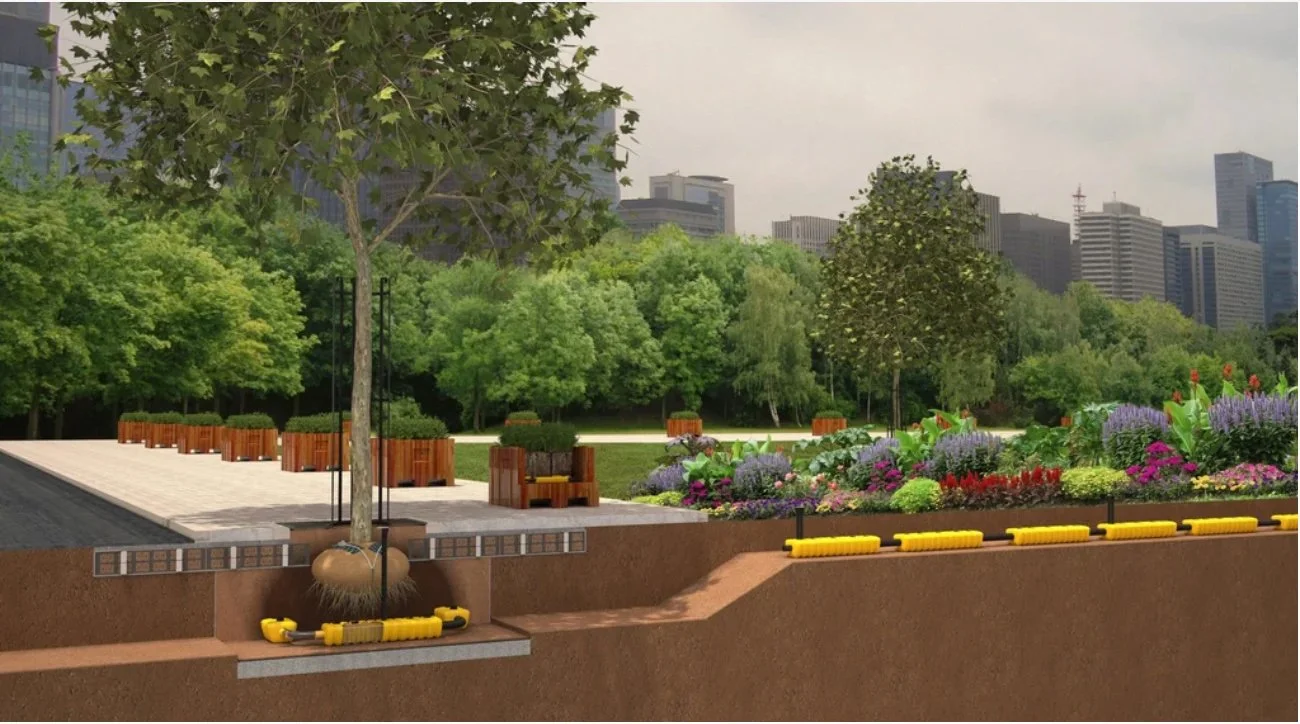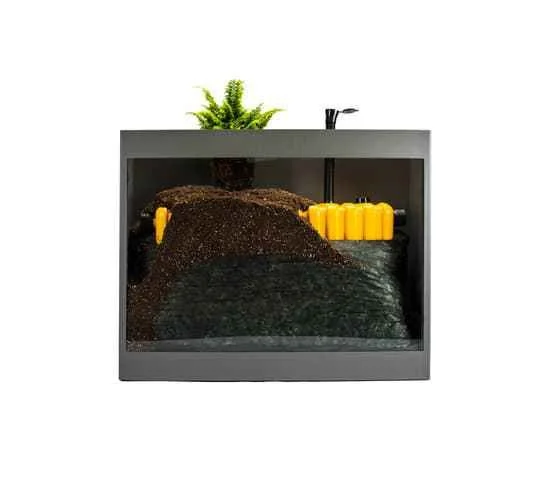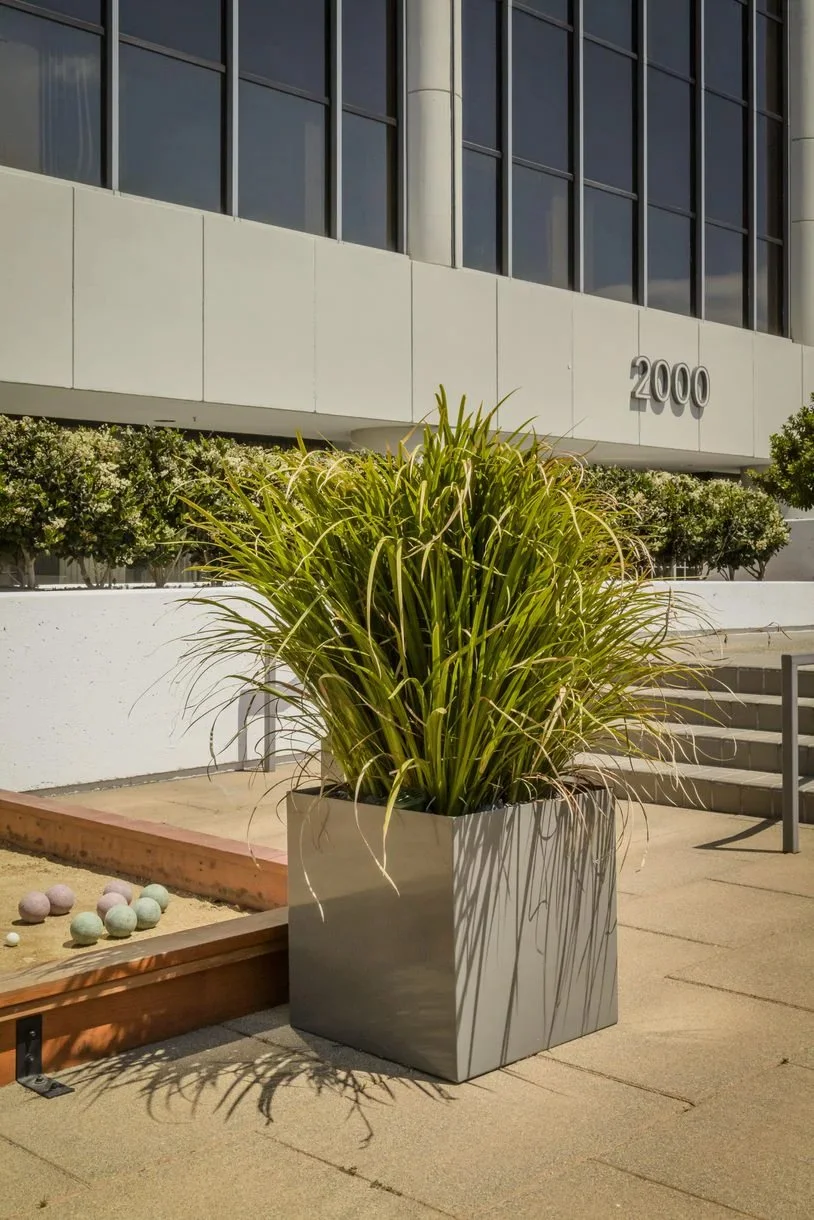How Are Planters in a Commercial Space Watered?
How Are Commercial Planters Watered?
Water, a resource that makes up 71% of our planet, is needed for all living things to prosper. Depending on salt concentrations, all living organisms need water to sustain themselves. Water is a valuable resource, which, in most circumstances, costs money to acquire and use.
In a commercial setting—such as an office, restaurant, rooftop, building foyer, or apartment building—adding greenery is not an afterthought. To stay competitive in any service or retail business, greenery is requested to fill spaces already graced with man-made and designed fixtures.
Adding greenery requires careful thought regarding what plants and commercial planters to use and how to maintain those plants. We don’t want to create a space with a stellar first impression only to have the plants look droopy and close to death in a few weeks. Plants that aren’t well taken care of portray an atmosphere of loss of attention to detail and overworked employees.
Whether the planter is inside or outside, all planter applications will need a person responsible for ensuring the plants stay healthy. This person will remove dead branches, prune small ornamental bushes or trees, add new top dressing (such as soil), remove dust, especially on broadleaf plants and on planter top lips, add nutrients, and finally water.
For exterior applications, such as rooftops and sidewalk cafes, the plants will likely benefit from the rainy days. However, rainy days are usually not adequate to maintain plant health. Moreover, if there is too much rain, plants can die due to overwatering if the planter does not have a way for the water to disperse. For interior applications, plants will—of course—need water to live.
When thinking about the watering regime for your commercial space, you have several options to consider: self-watering planters, sprinkler systems, reservoirs, and manual watering.
Self-Watering Planters
A self-watering planter is a container, usually made of a molded plastic, that has an integrated holding chamber with an access port to add water and nutrients. The integrated chamber is at the bottom of the planter, which has small holes for the roots to utilize the water by capillary action. After the initial planting, it will take several weeks for the plant to extend its roots to the water source and take up the amount of water it requires, but once the roots have grown to the holding chamber, the plant will only need to be watered via the access port every 6 to 12 weeks depending on sun exposure and the species of the plant.
Benefits:
Purchase one item
Water less often, typically every 6 to 12 weeks
Water level indicator
Water supply shaft
Separation between plant roots and excess water
Less money
Less overall water is needed
Add nutrients at the same time as water
Disadvantages:
Typically smaller sized planters
Less options for planter shape and color
Cannot be hooked to an automatic watering system
Planters cannot be customized
Sprinkler Systems
We do not recommend watering planters with sprinkler heads, meaning relying on in-ground sprinkler heads to water a planter. High-pressured outdoor sprinklers can deliver too much force for small plants and can, therefore, damage plants.
If the watering regime is to be incorporated into a sprinkler system plan, we recommend adding drip system lines to access the planter. There are products sold with very small heads that deliver small amounts of water to the base of the plant at soil level and sometimes can be fished up through access holes in the bottom of planters. Drip systems allow water to be added directly to the planter’s soil on a predetermined schedule that does not require human intervention, except in general maintenance of the plant itself, such as pruning or fall clean-up.
Benefits:
Scheduled automatic watering system will eliminate the chance of forgetting to water plants
Disadvantages:
All plants on the same drip line will receive the same amount of water, which can be a disadvantage if there are different types of plants planted in one planter
Water often evaporates before making it down to the roots if using the drip systems installed above the soil level
Nutrients need to be added separately
Outdoor applications only
Reservoirs
A reservoir, also known as a or sub-irrigation or subterranean watering tank system, is typically a separate item purchased with a new planter or for an existing planter. The reservoir is put into the planter, below the root ball, followed by soil with the access pipe above the surface of the soil where water and nutrients can be manually added.
PureModern specifically sells Ollie Plant Sippers, which has a tank to hold the water, filler pipe, float, and capillary leg (hole in the middle). These sub-irrigation tanks are convenient since they can fit into any planter that you desire so that you can choose the size, shape, material, and color of planter that fits your project specifications.
We suggest installing the sub-irrigation reservoir below the root ball. The distance from the sub-irrigation system to the root ball depends on the type of plant, and how large the root system typically grows. As the plant begins to establish itself, the roots will grow toward the reservoir. Then, the water and/or nutrients in the sub-irrigation reservoir will be utilized via the plant’s root capillary action.
Example of the Ollie Plant Sipper in a planter.
Benefits:
The plant decides how much water it requires
Helps with the quick establishment of the plant
Use whatever size, color, or shape of planter you desire
Can add to existing planters
Water is placed where plants need water, at the roots
Add water every 6 to 12 weeks
Add needed nutrients
Includes water level indicator
Includes a water supply shaft
Perfect for commercial use
Add to planter at whatever depth is suitable
Used for indoor or outdoor applications
Disadvantages:
Need to purchase additional items
Water needs to be manually added depending on the type of reservoir
Manual Watering
A designated person, preferably someone with a so-called green thumb, is needed to water and add nutrients on a designated watering schedule based on what each individual plant needs.
Benefits:
The designated person will have the opportunity to see if there are other things the plant might require, such as pruning, deadheading, ect.
Disadvantages:
If the schedule is not followed, plants will die
Overwatering can occur
Taking care of plants in their planters is an on-going process, and the more thought put into the watering regime, the more likely it is that the money spent on your plants is money well spent.
If you would like to discuss your planting project, please contact us by clicking here. Or, if you are interested in learning more about Ollie Plant Sippers, please click here.






